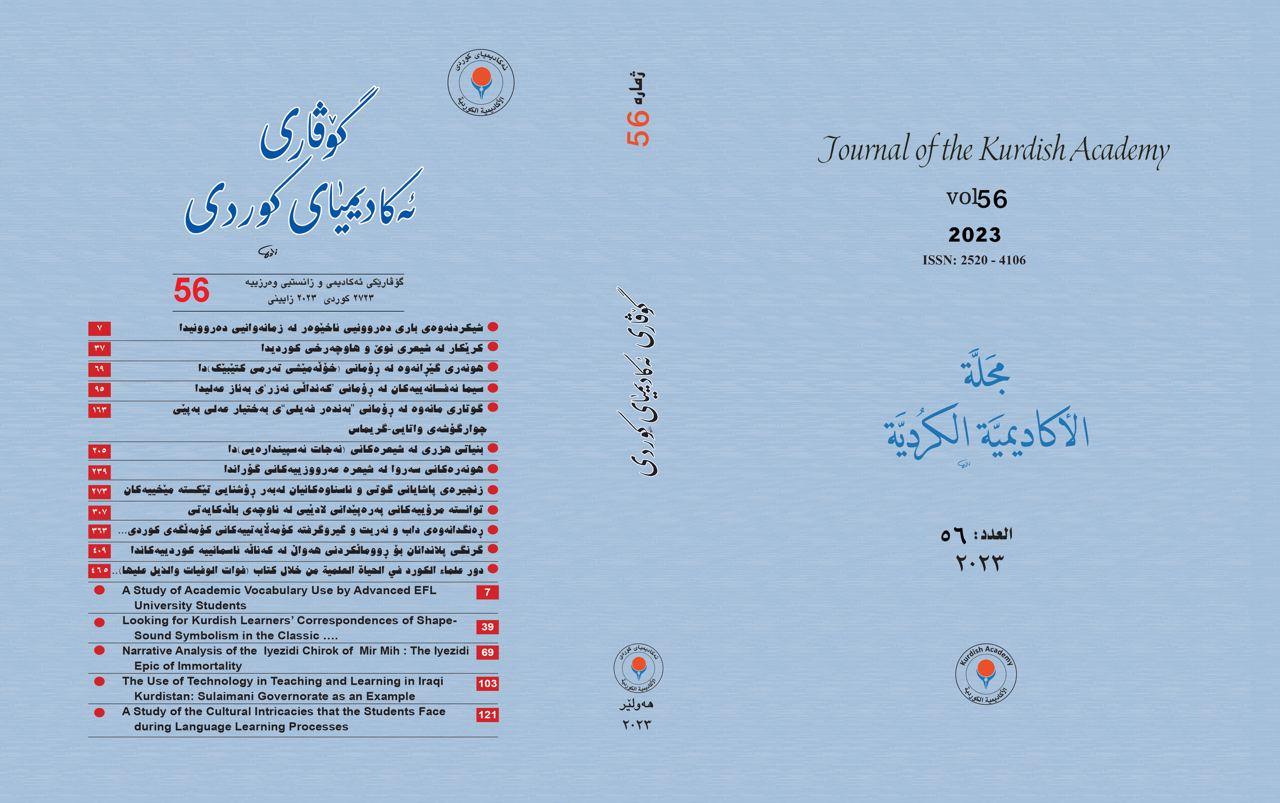Looking for Kurdish Learners’ Correspondences of Shape-Sound Symbolism in the Classic Takete-Maluma Phenomenon
DOI:
https://doi.org/10.56422/ka..56.342Abstract
In natural languages, the link between sound and meaning has been a theme of attention in the linguistic field. Although the majority of words display random associations between their form and meaning, there is a proof of iconicity, where form and meaning show resemblance, particularly in onomatopoeic words. The Takete-Maluma effect, where certain sounds are persistently related to round or spiky shapes, has been extensively studied. Previously, several pieces of research have emphasized the role of consonants in this effect, with consonants displaying a stronger impact compared to vowels. Building on this, this study aims at investigating the contributions of consonants and vowels in the Takete-Maluma effect. We carried out two experiments using Kurdish subjects, investigating the influence of consonants and vowels individually. Experiment 1 concentrated on consonants by using pseudo-words with two consonant pairs related to round and spiky shapes, combined with different vowels. The results showed a slight preference for consonants over vowels in sound-shape connections. The findings of the statistical analysis exposed that consonants have insignificant effect on the Takete-Maluma effect. Expanding on these findings, in Experiment 2, we explored the effect of vowels in isolation, regardless of the consonant framework. Accordingly, the goal was to check whether the effects witnessed in Experiment 1 were merely caused by consonants or if vowels themselves determined the outcome. The findings of this experiment specified that the vowel pair /o:/ and /u:/ continually related to round images, while the vowel pair /ɜ:/ and /i:/ were linked to spiky images. Nevertheless, the consonants did not notably influence the sound–shape process. Hence, the findings of this study challenge the opinion that consonants are the main drivers of the Takete-Maluma effect, contrary to some previous studies. It is not yet known of any investigation concerning the Takete-Maluma effect in the Kurdish language. Taken together, the goal of this study is to cast light on the specific influences of consonants and vowels in sound symbolism, focusing on the relationship between sounds and visual exemplifications. Consequently, the study will shed light on a research exploration that gives further possible anticipations about the nature of the language system.





